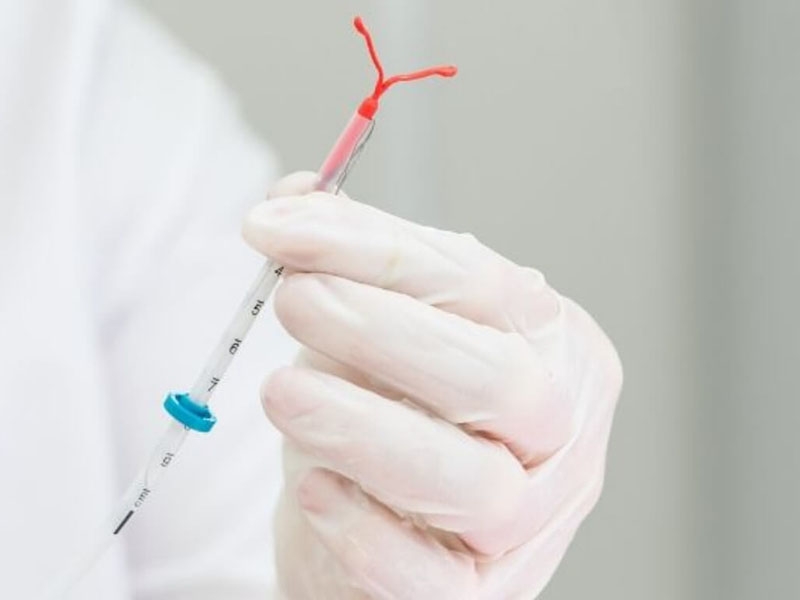
IUD removal
What is IUD Removal?
IUD Removal is a medical procedure performed to extract an intrauterine device (IUD) from the uterus. The IUD is a small, T-shaped device used for long-term contraception, and its removal is typically quick and straightforward. Whether the IUD has reached its expiration date, the patient desires a different contraceptive method, or it is causing complications, the procedure is performed with care and precision.
At Clinic Consultation, our healthcare professionals ensure a safe and comfortable experience for patients during IUD removal. The procedure is minimally invasive and is performed in a clinical setting by experienced practitioners.
What is IUD Removal Used For?
The primary purpose of IUD removal is to discontinue the use of the device, either because it has reached its recommended duration of effectiveness or due to patient preference. It may also be necessary in cases where the IUD has caused side effects, discomfort, or medical complications.
Additionally, IUD removal is essential for women who plan to conceive, as fertility typically returns to normal immediately after the procedure. At Clinic Consultation, we provide comprehensive guidance on post-removal contraceptive options or pre-conception planning.
How Does IUD Removal Work?
IUD removal is typically a quick and simple process performed during a routine clinic visit. The healthcare provider uses a speculum to visualise the cervix and gently pulls the IUD strings with specialised tools. This process is usually painless, though some patients may feel slight cramping or discomfort.
If the IUD strings are not visible or the device is embedded in the uterine wall, additional techniques, such as Ultrasound guidance or hysteroscopy, may be required. At Clinic Consultation, we prioritise patient comfort and ensure the safest possible approach to IUD removal.
What Are the Types of IUD Removal?
Different approaches to IUD removal may be employed depending on the specific circumstances:
Standard IUD Removal
Performed when the IUD strings are visible, this is a straightforward procedure that involves gently pulling the device out using forceps. It is quick, minimally invasive, and typically causes little to no discomfort.Complex IUD Removal
Necessary when the IUD strings are not visible or the device is embedded. This may involve using imaging tools like ultrasound or a hysteroscope to locate and safely extract the IUD. While more involved, it is still a low-risk procedure.
Each method is tailored to the patient’s condition and performed with the highest standards of care at Clinic Consultation.
What Conditions Can Be Identified Through IUD Removal?
While IUD removal is not diagnostic, it can help identify or address certain conditions associated with its use:
IUD Displacement
Detects when the device has shifted from its original position.Uterine Perforation
Identifies damage to the uterine wall caused by the IUD.Pelvic Inflammatory Disease (PID)
Evaluates infections that may have occurred with IUD use.Menstrual Irregularities
Assesses abnormal bleeding patterns linked to the IUD.Chronic Pelvic Pain
Investigates persistent discomfort potentially caused by the device.Hormonal Side Effects
Evaluates symptoms like mood swings or acne from hormonal IUDs.Fibroids or Polyps
Examines uterine growths that may interact with the IUD.
When is IUD Removal Indicated?
IUD removal is recommended in several scenarios:
Expiration of the Device
Removal is necessary once the IUD has reached its maximum effective duration, typically 3-10 years depending on the type.Desire to Conceive
Women planning a pregnancy must have their IUD removed to restore fertility.Discomfort or Pain
Persistent pelvic pain or cramping may indicate the need for removal.Excessive Bleeding
Heavy or prolonged periods linked to the IUD warrant removal.Infection or PID
If an infection develops, the IUD may need to be removed to facilitate treatment.Hormonal Side Effects
Issues like mood changes, acne, or weight gain from hormonal IUDs may lead to removal.IUD Malposition or Complications
Removal is necessary if the device has shifted or caused uterine perforation.
Pre- and Post-IUD Removal Care
Before the Procedure:
- Schedule the removal during a time when the cervix is naturally softer, such as during menstruation.
- Inform your doctor of any symptoms or concerns prior to the procedure.
- Take over-the-counter pain relief, if recommended, to minimise discomfort.
After the Procedure:
- Mild cramping or spotting is normal for a few days; rest as needed.
- Avoid using tampons or engaging in sexual activity for 24-48 hours to reduce infection risk.
- Follow up with your doctor if experiencing severe pain, fever, or heavy bleeding.
What Are the Contraindications for IUD Removal?
While IUD removal is generally safe, certain factors may complicate the procedure:
- Severe Infection: Acute pelvic infections may require treatment before removal.
- Embedded IUD: Complex removal methods may be needed, requiring advanced imaging or surgical techniques.
- Pregnancy: If pregnancy occurs with an IUD in place, removal should be approached cautiously to avoid complications.
Your doctor at Clinic Consultation will evaluate your individual case to determine the safest course of action.
What Are the Alternatives to IUD Removal?
For patients unable to undergo immediate IUD removal, alternative approaches may include:
- Hormonal Management: Adjusting medications to alleviate side effects until removal is feasible.
- Imaging Monitoring: Using ultrasound to track the IUD’s position and condition.
- Temporary Contraception Alternatives: Employing barrier methods or hormonal pills for short-term use.
At Clinic Consultation, we ensure every patient receives the appropriate care and guidance for their specific needs.
Book Your IUD Removal at Clinic Consultation
IUD removal is a simple yet essential procedure for maintaining reproductive health. At Clinic Consultation, our experienced professionals provide safe and comfortable care tailored to your needs. Schedule your appointment online today and take control of your reproductive health with confidence.
Click here to schedule an appointment online